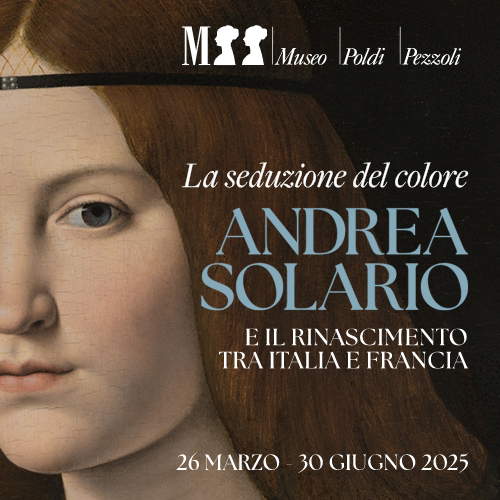Cremona, what to see: 10 places to discover the home of violin and nougat
Cremona, a city located in the region of Lombardy is renowned for its history and art. The center of Cremona is Piazza del Comune, which houses some of the city’s most famous monuments such as the Cathedral, the Loggia of the Militia, the Baptistery, and the famous Torrazzo. Cremona Cathedral, renowned for its architecture from the Romanesque and Gothic styles, is famous for its frescoes and facade. Next to the cathedral complex is the Torrazzo, the tallest medieval bell tower in Europe at 112 meters high, and from which the view of the city and surrounding areas can be observed. The octagonal-shaped Baptistery , on the other hand, preserves altarpieces and altars of grandiose Baroque style inside. There is also no shortage of museums dedicated to archaeological finds from the Roman era, such as the “San Lorenzo” Archaeological Museum, which preserves Roman objects, ruins, a Nymphaeum and parts of a Domus in order to gain a greater understanding of the city’s history. The Civoco Ala Ponzone Museum, on the other hand, holds works and treasures from the Medieval period to the 19th century. Making the collection even more valuable is St. Francis in Meditation, a work by Caravaggio. Cremona is also a city with a distant gastronomic tradition made important thanks to its stores and stores, such as the Sperlari store, famous for its typical products such as nougat, found in different flavors, mostarda, almond cakes, jams, and sweets made of pure chocolate. Finally, Cremona is also famous for its traditional violin making: in fact, the city has for centuries been a place of excellence in the production of stringed instruments (in ancient times it was lutes, today it is mainly violins, violas, cellos, and double basses), so much so that traditional Cremonese violin making has been recognized as a UNESCO Intangible Heritage of Humanity since 2012. If you have never been to this city, shrouded in charm, art and history, then here are the 10 places you should not miss.
1. The Town Hall Square
Despite the ancient origin of Cremona’s Town Hall Square, its current layout dates back to medieval times. In this panorama made up of the past, suggestion and power, the square is adorned with monuments from the communal age, such as the Cathedral complex, which includes the Cathedral of Santa Maria Assunta, begun in 1107, and the octagonal-shaped Baptistery, a reminder of the eighth day of the sacred scriptures and the Resurrection. Inside are preserved altarpieces and works ranging from the Romanesque, Gothic to the splendor of the Baroque. The square is also distinguished by the Loggia of the Militia, and the fascinating Torrazzo, the tallest bell tower in Europe built between 1267 and 1305 with a height of 112 meters. A Renaissance loggia connects it to the Torrazzo, also home to the Vertical Museum dedicated to the measurement of time. Built between 1267 and 1305, at 112 meters high it is the tallest masonry bell tower in Europe.

2. The Cathedral of Santa Maria Assunta
The Cathedral of Cremona, also known as the Cathedral of Santa Maria Assunta, dates back to the 12th century and is a building of Romanesque origin, traces of which remain only in the portal and the two side turrets. Its structure is later revived with elements ranging from Gothic to Baroque styles. The cathedral, characterized by an exterior cladding of white Carrara and Rosso Veronese marble, features an important central rose window from the 1300s by Giacomo Porrata of Como, several sculptures of two lions, and statues of St. Imerio, the Virgin and St. Omobono. The interior, on the other hand, which has three naves with a Latin cross plan, preserves remarkable Renaissance sculptures and paintings such as: the sculptural reliefs of the Ark of the Persian Martyrs and the ark of St. Arealdo of 1482 by Giovanni Amadeo and Giovanni Piatti, the fresco depicting the Crucifixion of 1520-21 by Pordenone or again the Altarpiece of the Assumption of 1579 by Bernardino Gatti and Giovanni Battista Trotti. In addition to the listed works, frescoes dedicated to the stories of the Virgin and the Passion of Christ by various authors are illustrated in the nave. The Cathedral complex consists of the Cathedral, the Baptistery and the Torrazzo.
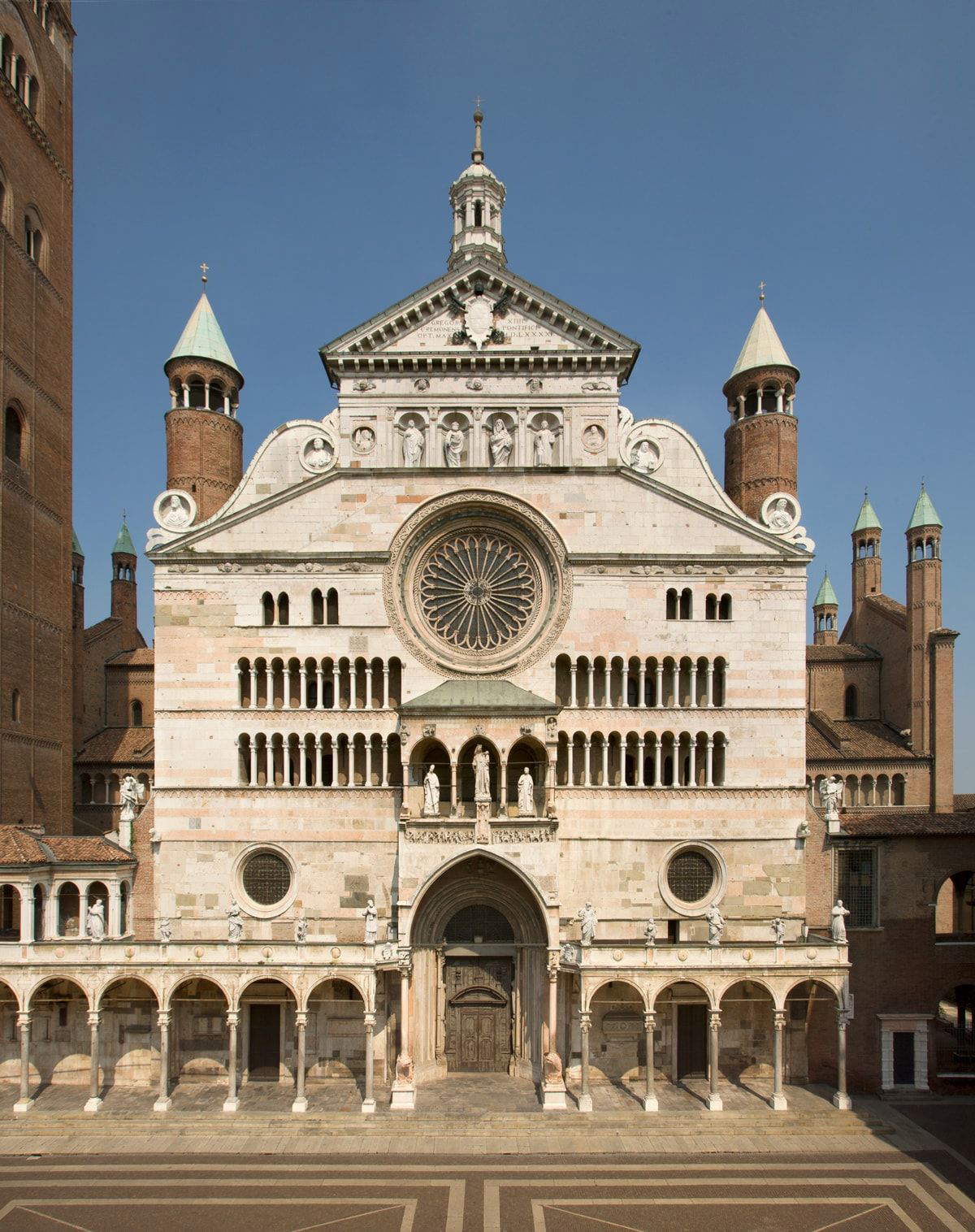
3. The Baptistery of Cremona
The Baptistery built in the Romanesque style dates back to 1167. Its octagonal shape, symbolically connected to the eighth Christian day and thus to the concept of Resurrection, echoes that of the baptistery in Florence in 1100, itself based on the formation of the Roman Pantheon. The exterior, modified in the Renaissance period between 1553 and 1558, has two marble sides, the same facing used for the cathedral, and one of them displays the entrance portal. On the vault of the building, on the other hand, a statue of the archangel Gabriel was placed in 1307. Inside, three altars are visible, which in turn display noteworthy works. The oldest altar is adorned with a 14th-century wooden crucifix and a 13th-century fresco. Its attribution is uncertain. In contrast, the altar to the right from the Baroque style is known as the Altar of St. Blaise and its construction dates between 1592-1598. The altar to the left of the entrance, on the other hand, is called the Altar of the Blessed Virgin of Sorrows. It features a 1697 Baroque wooden anchor by Giacomo Bertesi, while the statue of the Virgin, by Picenardi, was built between 1682 and 1700.
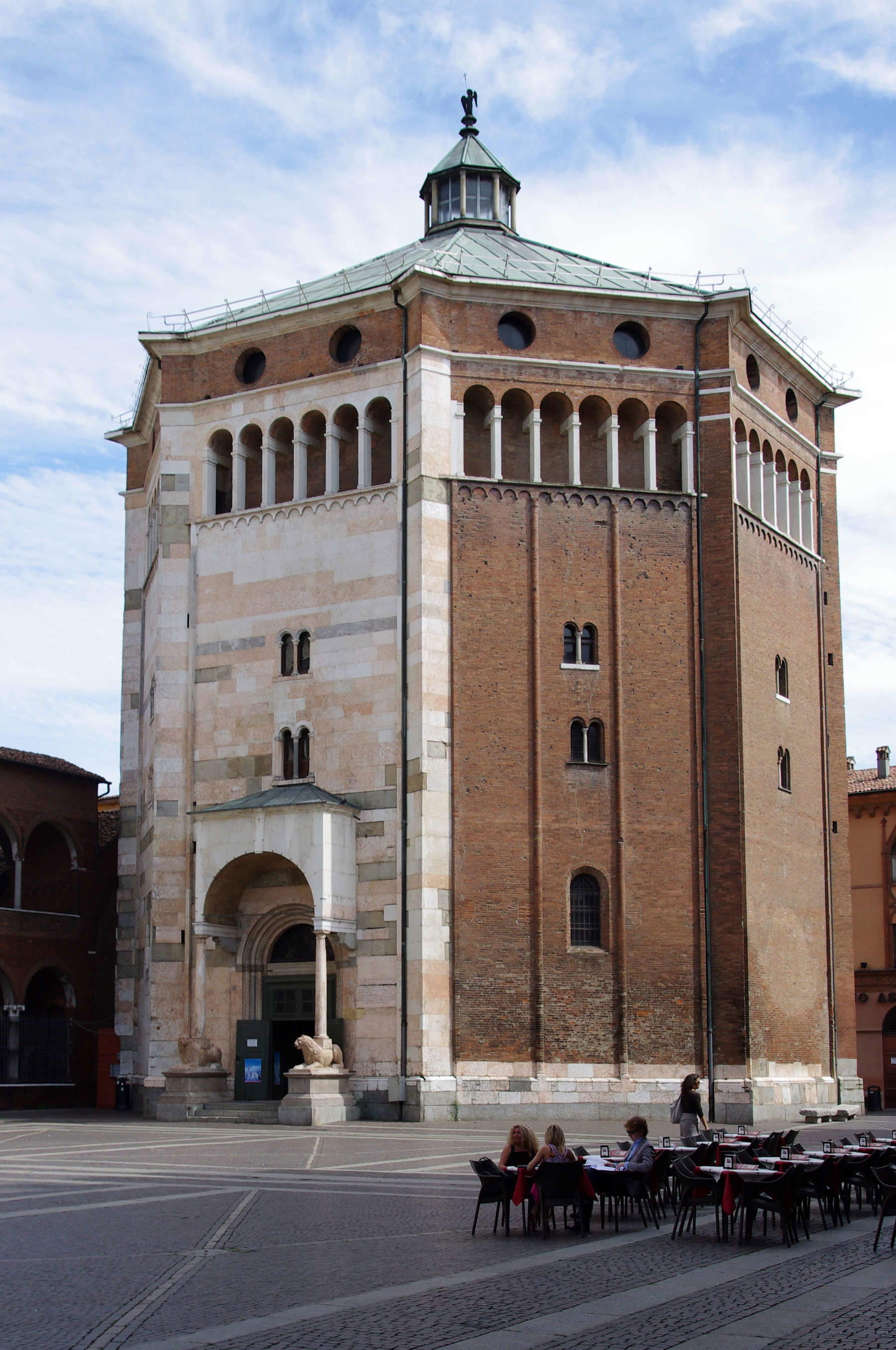
4. Cremona’s Torrazzo Vertical Museum.
With a height of 112.54 meters and 502 steps, Cremona’s Torrazzo is the tallest medieval bell tower in Europe. Although the exterior of its lower part has a square base, decorations and intertwining arches, there is no certain data on the period of its construction. The upper part was built between 1284 and 1305, and is represented by the Gothic Garland, consisting of overlapping architectural structures, round arches and a conical spire. The Torrazzo Vertical Museum also features the astronomical clock, which was built in 1582 by Giovanni Francesco and Giovanni Battista Divizioli. Through its spaces, the Vertical Museum has created an exhibition itinerary related to the measurement of time. The Hall of Astronomy is dedicated to the celestial bodies; the Hall of the Dial and the Hall of the Mechanism present the characteristics of the clock’s operation; Inside the Hall of the Measurement of Time, on the other hand, multimedia content and ancient measuring instruments are displayed in order to make visitors understand the conception of time itself.

5. Ala Ponzone Civic Museum
The Ala Ponzone Civic Museum is distributed in an exhibition itinerary that starts from the Middle Ages and the 15th century, and displays sculptures, torn frescoes, and furnishings including Platina’s closet from 1477. The Hall of the Sixteenth Century, on the other hand, offers a space displaying Renaissance works such as: Giulio Campi’s 16th-century The Sacrifice of Marcus Curtius, Gervasio Gatti ’s 16th-17th-centuryAnnunciation or Bernardino Campi’s 1568Assumption of the Virgin. Also evocative is the Caravaggio Room, which houses the famous canvas depicting St. Francis in meditation by the artist, and Christ Appearing to the Mother after the Resurrection painted by Bartolomeo Manfredi. Several rooms beyond that are devoted to Cremonese still life, Baroque, Neoclassical and Romantic painting of the 1600s, 1700s and 1800s with works such as Luigi Miradori ’s Sleeping Cupid also called the Genovesino. Additional rooms instead preserve various selections of oriental porcelain, Lombard and European majolica, and ivories. Iconographic sections related to the history of Cremona and its pictorial representation, such as Cremona and its celestial guardianship painted in the 17th century, conclude the exhibition itinerary.
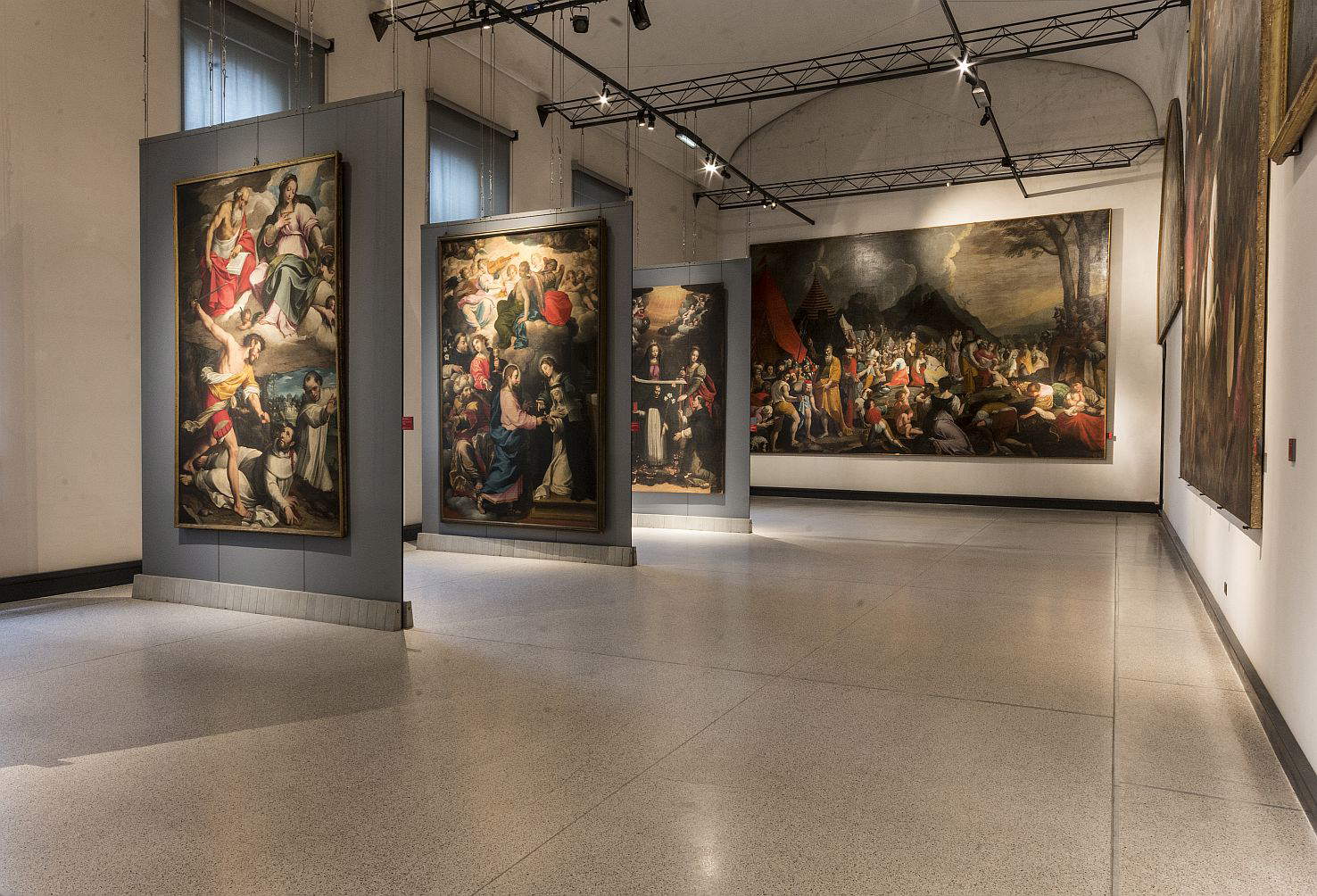
6. “San Lorenzo” Archaeological Museum
The San Lorenzo Archaeological Museum houses more than 500 archaeological objects from the Roman period including furniture, sculptures, bronze artifacts and architectural elements. Inside, the exhibition itinerary is divided into several distinct sections: the display of the remains of a building, probably a theater (located at today’s Via Cesare Battisti), the private space characterized by the domus in Via Colletta where the earthenware floor and partially decorated wall are still present, the Nymphaeum in Marconi Square, and the necropolis accompanied by funerary elements. The museum also features an immersive, multimedia part: through the use of an Oculus, visitors can virtually access a Roman-era house. The device gives a unique experience, allowing the visitor to even enter inside the Nymphaeum.
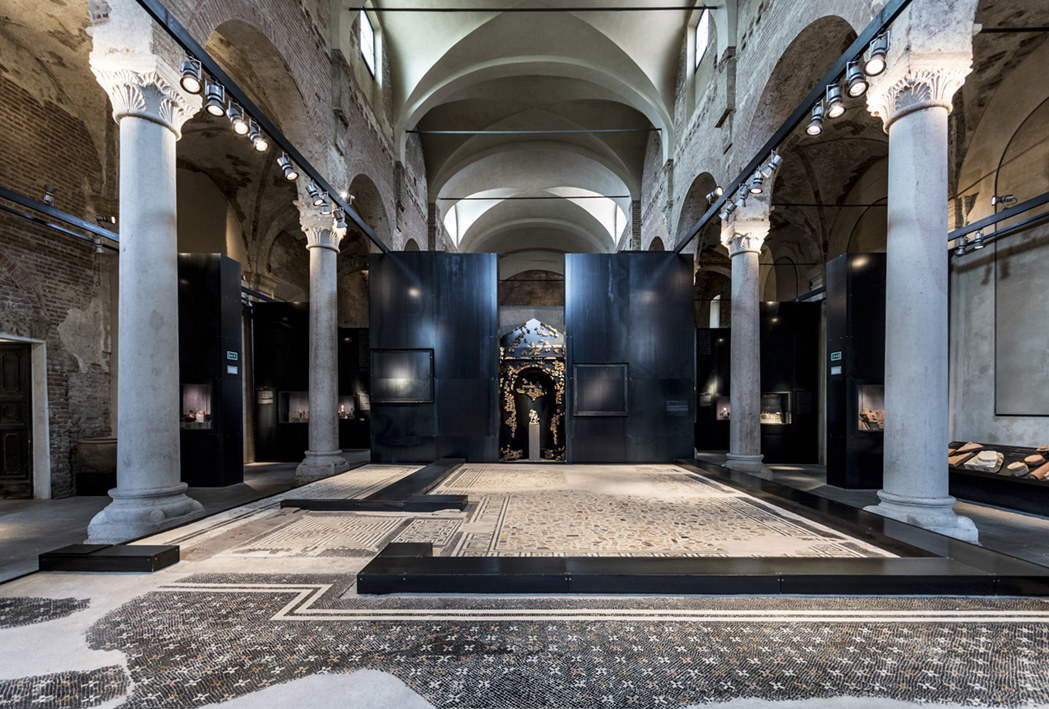
7. The Church of San Sigismondo
The Church of San Sigismondo originated in 1463 and was completed in 1535. It is a finely decorated single-nave church. In fact, the sanctuary is considered a maximum expression of 16th-century Mannerism. Its interior, which refers to decorative elements of Parmigianino and Giulio Romano, is decorated through the technique of fresco decoration, dating from 1535 and by artists such as Camillo Boccaccini, Bernardino Gatti and Bernardino Campi. Among the most important frescoes are: Christ in Glory with the Four Evangelists, Christ and the Adulteress and the Resurrection of Lazarus in the chancel walls, and Giulio Campi ’s high altarpiece depicting the Madonna in Glory with Saints Chrysanthemus, Daria, Sigismund and Jerome. In contrast, the barrel vault is adorned with the Resurrection of Christ and Jonah Rejected by the Whale, the Ascension and Pentecost.
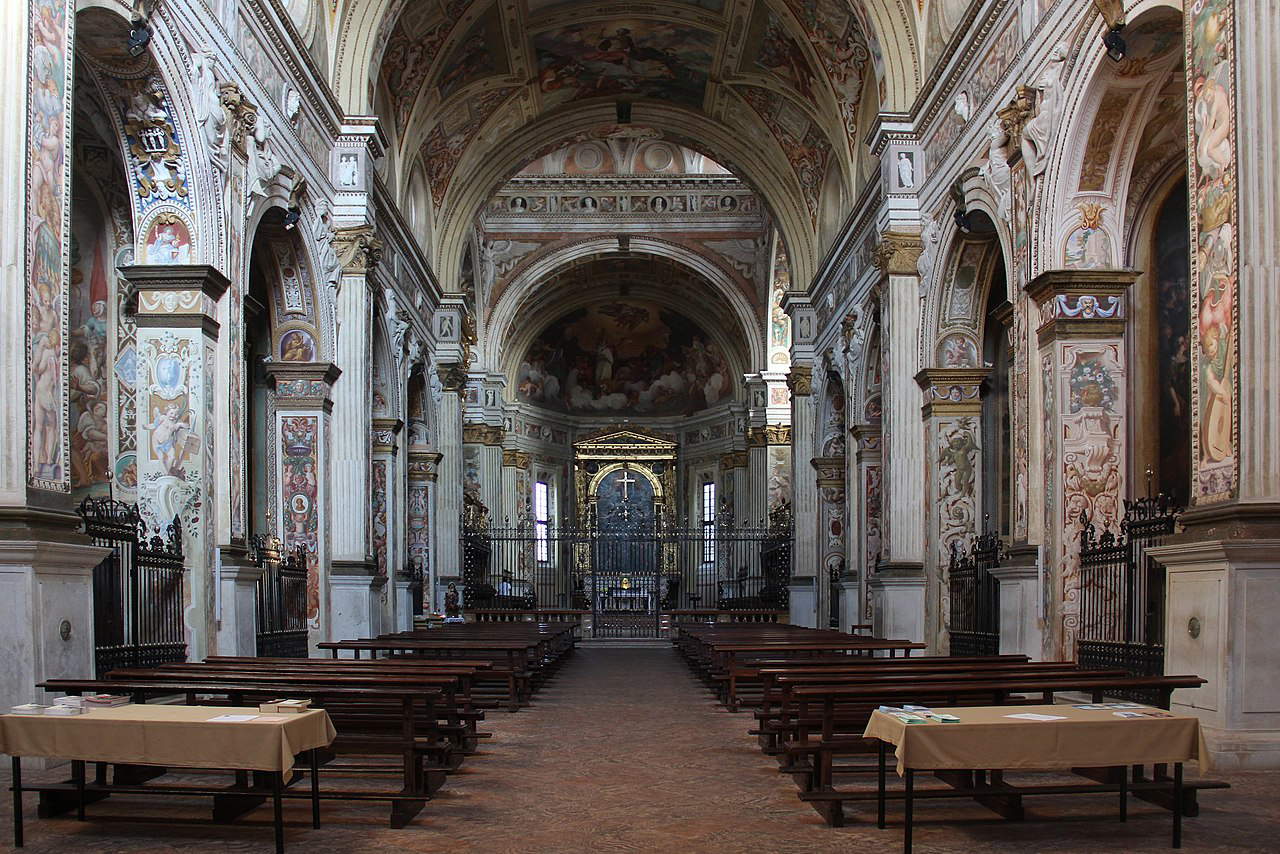
8. Loggia of the Militia
The Loggia dei Militi, was founded in 1292 located in front of Cremona Cathedral and in the past the commanders of the city Militias used to meet inside the building. The first version of the structure, in addition to being open on the other sides, must have also featured an external staircase, demolished in 1871, leading to the Collegio dei Giureconsulti on the mezzanine floor, while the front façade houses the wall plaque in which the Banner of the municipality is in the center. The banner is accompanied by lions depicting the four portals of the city. To this day, Cremona’s emblem, consisting of a double sculptural work depicting Hercules, its mythical founder, holding up the city’s coat of arms, is preserved under the portico.

9. The Violin Museum
The present Violin Museum was created from the nucleus of musical instruments donated in 1894 to the City of Cremona by the collector Giovanni Battista Cerani: these include instruments that were owned by the great Antonio Stradivari, perhaps the most famous violin maker in history. In a ten-room itinerary, it is possible to visit a collection that has no equal in the world and tells the five-century-long story of an art that has brought prestige to Italy in the world, that of violin making. Ancient and modern instruments, drawings, documents to illustrate to the public the whole world of violin making: there is also an Auditorium where, at certain times (information on the website of the Violin Museum) it is possible to listen to the sound of violins made by Stradivari, some of which are still played by virtuosi from all over the world.
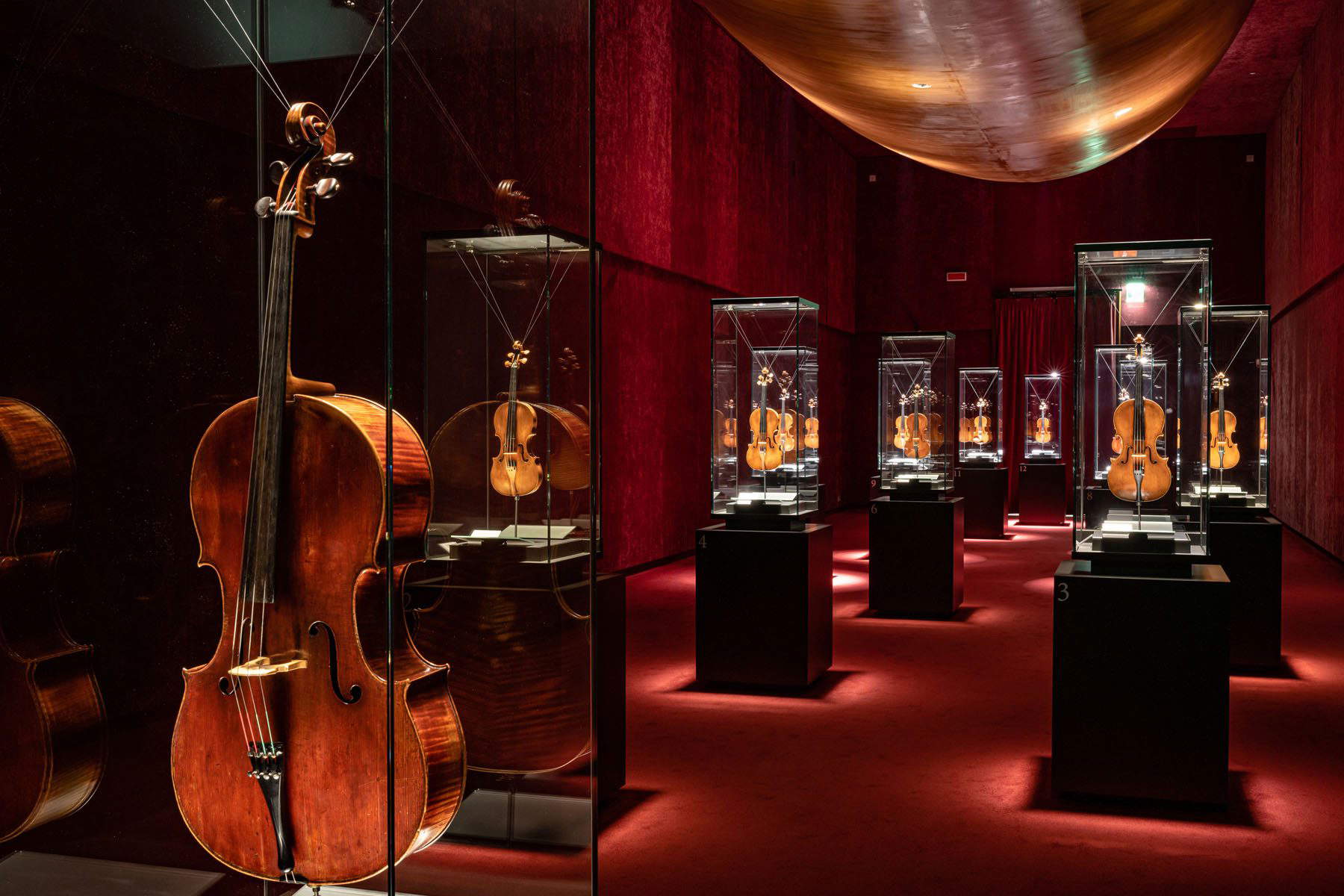
10. Sperlari workshop
There is an ancient store in Cremona that is among the first to be dedicated to the manufacture of its specialties: it is the Sperlari workshop or store. In the past it became famous for the wisdom of Enea Sperlari, its founder, in creating the typical nougat and mostarda. In 1911 the new factory was built to process the products also becoming, thanks to its fame, a supplier to the Royal House that included Queen Mother Margherita, and Prince of Piedmont Umberto. To this day, Sperlari’s store has become an excellence in the area and throughout Italy thanks to the continuous processing of nougat and mustards. However, there is no shortage of other typical specialties such as: the Graffioni made of pure chocolate, the famous Sbrisolosa cake, the Gran Mandorla cake, and the artisanal Cotognata, either classic or made with fragrant citrus fruits.

 |
| Cremona, what to see: 10 places to discover the home of violin and nougat |
Warning: the translation into English of the original Italian article was created using automatic tools. We undertake to review all articles, but we do not guarantee the total absence of inaccuracies in the translation due to the program. You can find the original by clicking on the ITA button. If you find any mistake,please contact us.






